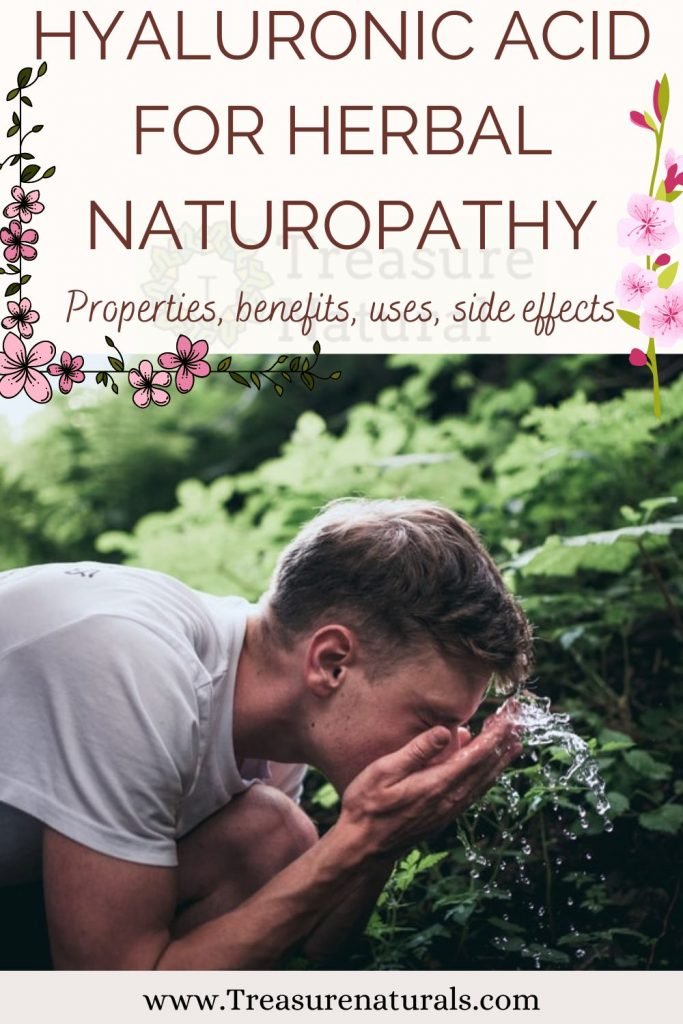
Hyaluronic acid is a molecule produced by our body often used in drugs, supplements and cosmetics to restore the function of the joints or to counteract wrinkles and signs of aging.
Hyaluronic acid is a molecule produced by our body, represents the main component of the extracellular matrix and is involved in tissue regeneration and wound healing.
What is hyaluronic acid
Hyaluronic acid is a high molecular weight polysaccharide of the group of glycosaminoglycans, formed by a linear chain, consisting of disaccharide units of N-acetylglucosamine and glucuronic acid.
It is a molecule synthesized by our body to moisturize and protect tissues and is one of the main components of connective tissues on which it performs, together with collagen and elastin, an important structural function, giving the skin its particular properties of resistance, plasticity, turgor and density.
Hyaluronic acid is a fundamental component of the synovial fluid that is located inside the joints with the aim of protecting the cartilages from wear and excessive loads. The synovial fluid, in addition to cushioning the movements, ensures nourishment to the cartilage, accelerating its reparative processes.
Joint aging, as well as skin aging are associated with a decrease in the production of hyaluronic acid. Its deficiency leads to dehydration and weakening of the tissue structure, factors responsible for the formation of wrinkles and sagging skin.
Where is hyaluronic acid found
In the human body it is found in the skin, in the vitreous humor of the eyes (of which it maintains hydration); in cartilage, tendons and joints; in the umbilical cord and walls of the aorta.
The discovery of hyaluronic acid is due to Karl Meyer and his assistant, John Palmer, who in 1934 isolated it from the vitreous body of a cattle’s eye. In the 70s and until a few years ago, this molecule was extracted exclusively by bacterial fermentation from the crest of roosters.
Today, hyaluronic acid of avian origin is flanked by that extracted by a fermentation process of bacteria on a plant substrate. Modern production techniques allow the synthesis of different types of hyaluronic acid with different characteristics and fields of application.
Properties and uses of hyaluronic acid
The chemical structure of hyaluronic acid gives this molecule properties that make it particularly useful both in the medical and aesthetic fields, in particular to increase the plasticity of tissues, improve the functionality of joints and ensure hydration and skin tone.
Since its concentration in the tissues tends to decrease with advancing age, it often resorts to hyaluronic acid injections in orthopedic surgery to restore joint function and in and aesthetic dermatology in order to eliminate wrinkles and prevent skin aging.
In the orthopedic field, intra-articular injections of hyaluronic acid, called viscosupplementation, are performed when the synovialfluid loses its properties of elasticity and viscosity in the joints affected by severe arthrosis. In aesthetic medicine it is instead used in the form of an injectable filler to correct small skin imperfections.
In otological surgery, hyaluronic acid is used as a regenerator of perforated tympanic membranes. Hyaluric acid is found in artificial tear formulations useful for moisturizing the eye.
Ointments and creams based on hyaluronic acid available in pharmacies (connectivin) are used to heal and heal small wounds and skin excoriations.
On the market are also available food supplements and cosmetic products and anti-aging action for the face and body, for its moisturizing and anti-wrinkle properties.
Inside cosmetic products it can be added with different molecular weights and, consequently, with different ability to cross the stratum corneum.
- When its molecular weight is high, since it cannot penetrate the stratum corneum of the skin, it forms an invisible film capable of blocking the evaporation of water, counteracting skin dehydration.
- If its molecular weight is medium, it penetrates through the skin and provides the water necessary to preserve turgor and firmness to the skin.
- Finally, if its molecular weight is low enough, it is able to reach the subcutaneous layers, stimulating the production of collagen, a protein that gives resistance to tissues, thus determining a temporary filling and smoothing of small wrinkles.
By stimulating the formation of collagen and connective tissue, hyaluronic acid is considered an anti-shock molecule with a lubricating, healing and anti-inflammatory action, as it prevents damage due to physical stress and hinders the free spread of particular substances, such as bacteria and infectious agents.
Contraindications of hyaluronic acid

Being a natural constituent of connective tissues, hyaluronic acid in itself, does not produce obvious side effects and does not present particular contraindications of use. Any side effects associated with its clinical, aesthetic and health use should therefore not be sought in the substance itself, but rather in the way in which it is administered.






